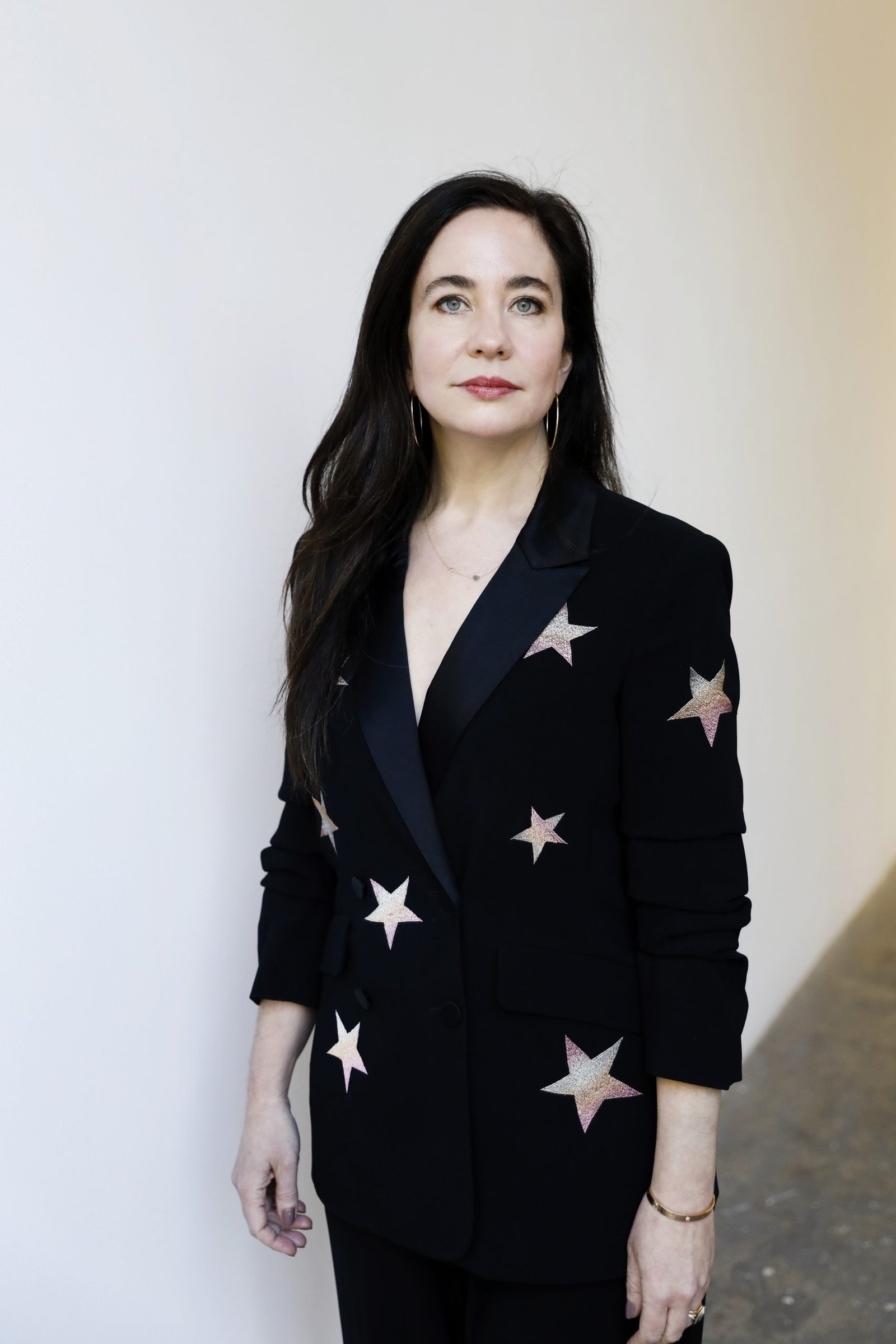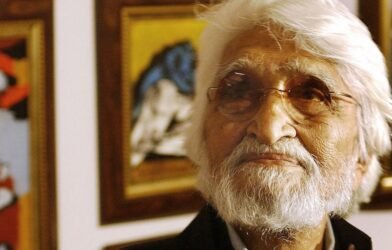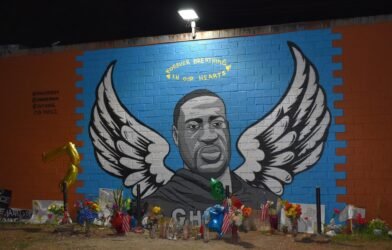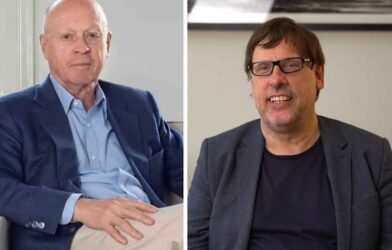Shoptalk is an interview series about the experiences of women art dealers and industry insiders of various generations, as told to Artnet’s Art Detective columnist Katya Kazakina. Artnet News Pro members get exclusive access—subscribe now.
Allegra LaViola was 27 when she opened her first gallery on East Broadway in Manhattan in September of 2008 just as the global financial crisis roiled the art market. Sixteen years later, her gallery is entering a new chapter, having survived various upheavals and incarnations.
Over the years, LaViola became known for generating buzz and discovering hot emerging talents. She was first to give New York solo shows to Jordan Casteel (in 2014), Cy Gavin (in 2015), and Wendy Red Star (in 2019) — long before anyone was really paying attention. In 2020, her group exhibition “My Flannel Knickers” brought attention to Surrealist artist Leonora Carrington (1917-2011), whose painting would go on to fetch $28.5 million at Sotheby’s four years later.
LaViola was also a hustler, quick to pivot and jump on opportunities. In 2014, she bid adieu to Allegra LaViola gallery and rebranded as Sargent’s Daughters. The name was inspired by a book about John Singer Sargent’s 1882 painting The Daughters of Edward Darley Boit. Its inaugural show featured 40 female artists exploring Sargent’s legacy. In 2018, she began sharing her space with Shrine gallery, which focuses on outsider art, to cut costs while she figured out her next step. Last year, Sargent’s Daughters added a branch in Los Angeles, one of many New York galleries betting on the city’s growing, vibrant art scene.

The facade of Sargent’s Daughters new space on Broadway in Tribeca, New York. Courtesy: Sargent’s Daughters
In June, LaViola followed the pack to Tribeca, landing on Broadway between Franklin and White Streets and tripling her gallery space (and overhead). After years on the periphery, she is now neighbors with international heavyweights like Pace and Almine Rech. Marian Goodman gallery, which is slated to open this fall, is diagonally across.
This move, however, coincides with another downturn in the art market. More than a dozen galleries, including LaViola’s peers David Lewis and Simone Subal, closed in New York in the past year while bluechip dealerships including David Zwirner and White Cube have laid off staff. Many others are struggling to stay open as sales have dried up, following a pandemic-era boom.
I spoke with LaViola, 43, about her gallery’s past, present, and future, the challenges and opportunities as she hopped between New York and Los Angeles for the openings of new mixed-media works by Pussy Riot’s founder Nadya Tolokonnikova, a solo debut by Caribbean-born painter Naomi Lisiki, and a 20-artist group show called “Summer Camp.”

An installation view of “My Flannel Knickers,” a 2020 group show at Sargent’s Daughters inspired by a 1950s short story by Leonora Carrington. Courtesy: Sargent’s Daughters
What made you leave East Broadway after all these years?
I had started to look for spaces in Tribeca about a year and a half ago. It felt like the nexus of the art world just shifted over there. It became very easy to go to all these openings simultaneously and that felt exciting.
Just being on Broadway between Franklin and White is a huge difference for me than being on East Broadway, where people had to make more of a special detour to come see me. Which they did! But I know I’m lazy myself a lot of the time. It’s nice to be able to just roll in. To be on the route of so many people seemed like an essential move. The foot traffic has been fantastic.

An installation of a solo debut by Naomi Lisiki at Sargent’s Daughters Tribeca gallery in 2024. Courtesy: Sargent’s Daughters
What about the space attracted you?
It was exactly what I had been looking for: Beautiful, landmark façade, very distinctive and a little romantic, with the pressed tin ceilings, wooden floors, which I love. It had a huge amount of space. There’re two floors, really like almost four floors because there’s the ground floor and a mezzanine. There’s a lower level, which is also built out as a gallery, and then there’s a sub level, which is storage and work rooms. Each of those levels (except for the mezzanine) is 3,000 square feet.
The flexibility of the space is also incredible. It could have monumental sculpture. You can do huge paintings, or you can make it very intimate, you can break it up. I’m making the mezzanine office into a little bit of an old fashioned uptown jewel box space, where you can come and I can offer you coffee or a drink and we can look at art in a little more of a relaxed setting.
Did you feel any pressure to expand? There’s a lot of talk about “grow or go” in the art world.
Yes, 100 percent. I feel like this space signifies a different level of engagement and ambition. I want to be able to work with artists who are at the middle or higher levels of their careers and attract them with the ambition of the space, with the location, with the overall program.

An installation of “Inverso Mundus: Chimera,” an exhibition by AES+F collective at Sargent’s Daughters in April, 2024. Photo: Katya Kazakina
This seems like a change of direction. Your gallery used to be a launching pad for emerging artists. But you recently had a show of AES+F, an acclaimed Russian collective that’s been around for decades.
I’m interested in expanding in a variety of directions, including with estates and more exhibitions that are historical conversations with contemporary work. That is something that’s been of interest to me for a very long time. Many, many years ago, I did a show with Yevgeniya Baras and Thornton Dial. The gallery’s name “Sargent’s Daughters” was meant to evoke that thread between the old world, the new world, the global interest, and the threads that run between them.
Emerging artists are always going to be interesting to me, but I would like to explore other avenues more deeply and work with artists at different points in their careers, like AES+F, who were so ahead of the curve talking about what’s relevant now. I’m not really interested in churning out shows that are generating “buzz.”
I am surprised you aren’t interested in the buzz. When we met, many years ago, I would say that you were really good at that. There was a porn-theme show that upset your Orthodox Jewish neighbors so much they complained to the New York Post. And I remember one gallery dinner in 2012, with rats on the menu, which was written up in the New York Times.
The kind of things that I was doing 10 or 15 years ago were very interesting to me at that point. A lot of artists were my contemporaries in terms of age. Now if I’m showing emerging artists, I’m like 20 years older than they are. So that’s a big difference in terms of conversations. I have changed, the gallery has changed, and that’s exciting to me. That’s why I want to be in a different area, in a different location in the center of something.

Sargent’s Daughters solo booth of Wendy Red Star at the Armory Show in 2021. Photo: Katya Kazakina
You first opened your gallery during the financial crisis. Your move to Tribeca coincides with another downturn. How is it different from 2008?
Starting then was pretty bad, but in a way kind of good because if I sold anything at all it was a huge miracle. Also what I was selling then was not very expensive. I also had the benefit that nobody had any idea who I was so I could experiment freely. On the other hand nobody was rallying to support me.
The recent slump is very different and much more of a correction than an actual crisis. People are not gobbling indiscriminately like they were a few years ago. But if you have something that people want, it’s not too rough.
I remember we once talked about pandemic-era frenzy, and you mentioned that there were times you didn’t know who’s emailing you, like are they even real people?
People were so hyped up about stuff. It was very helpful at the time, obviously, because it was Covid, and we were terrified. Don’t get me wrong, it’s great when things are going well. But I think there was a superficiality to it.
The conversations that I’m having now with people are a little more measured; people are taking their time. The ultimate goal here is to present the work to collectors in a way that values and translates the art as ideas. And that can’t really happen if people are just maniacally buying.

Paintings by Naomi Lisiki at Sargent’s Daughters gallery. Courtesy: Sargent’s Daughters
Conversations are great, for sure, but I assume you have steep overhead with galleries in New York and Los Angeles.
Yeah, it’s insane, it’s a lot.
Does that keep you up at night?
I mean, I am not alone among art dealers in constantly staring into the abyss. I think all of us are very comfortable in this high-risk environment. You absolutely have to be, taking on these challenges and taking these big risks. There’s no way you can do it without just being absolutely terrified and watching your toes hover over the edge.
You just have to look beyond that, stay focused on what needs to be done, and have faith that you can accomplish it—or else you will either fall into the abyss or become despondent.
Do you have a cushion to get through this period?
Are you asking me if I’m about to go home bankrupt? I think there’s always a possibility of anybody closing. These things can happen very quickly. I do my accounting, so I see how quickly even big sales just vanish.
I’m terrible at art world gossip, so I did not know that David Lewis and Simon Subal were about to close. Those are galleries that I liked and admired, and lots of people did. So, it’s surprising when these galleries close when by all outward appearances they seem to be doing so well.

Allegra LaViola.
Did you actually ever consider closing?
There’s been moments of extreme duress. I am not Matthew Brown. I do not have an oil fortune. Unfortunately. Larry Gagosian didn’t either.
Right after I started, it was really tough. I was trying to do all these different things. Every once in a while I would get lucky and something would work out and save me in the last moment. But I didn’t really feel like there was an option for me to close. I didn’t allow myself to feel that. Part of it is just naïveté for having signed a 10-year lease. I felt like I was locked in.
It’s funny how so many choices are dictated by real estate
The advantage was that up until three years ago, I didn’t have any employees, it was just me. I didn’t have payroll to meet. I had a part-time person here or there, but my overhead was mostly rent.
I could do many things on my own—and did. I hung all the shows, I did all the lights. I painted the walls. I picked up the art. I spent a lot of time on the badger ladder. I wasn’t married, I didn’t have kids, I could stay till midnight in the gallery doing this.

Cy Gavin made a solo debut at Sargent’s Daughters in 2015. He’s now represented by Gagosian. Courtesy: Sargent’s Daughters
In 2014, you renamed your gallery Sargent’s Daughters. Why?
I felt like I hit a wall. The gallery wasn’t going in the direction I wanted it to go in. I wasn’t able to crack the next level of things: Better collectors, better artists, making any money.
I was searching for a name that would encompass something larger than me. Sargent’s Daughters gave me more flexibility. I am always looking for flexibility. It allows you to pivot quickly.
Did the renaming and rebranding help?
Yes. That’s the beauty of New York: You can endlessly reinvent yourself. You can burn it all down and begin again. And many people have.
Let’s talk about art prices, and specifically prices for new artworks (or primary prices). A lot of collectors have been complaining that they are too high, especially when artists don’t have robust secondary markets. There are lots of examples of this among blue-chip and emerging artists, even stars like Christopher Wool and Rudolf Stingel and Nicolas Party.
I think the prices are crazy. It becomes a very difficult thing. I remember that with an artist who was in a group show that I did over 10 years ago. He had a meteoric rise. Everybody was super excited. And then he was kind of in stasis for a while. Nothing was happening. But that was my first taste of people being like, “Wow, these auction prices are not good” and “What’s happening now?” I remember learning the difficulty of that price point, almost like a trap that happens when artists get so expensive so quickly.

A solo booth by Carlos Rosales-Silva at the Armory Show in 2023. Courtesy: Sargent’s Daughters.
Let me ask you, why can’t galleries lower primary prices in those situations? Even Bergdorf Goodman has sales.
I don’t know that I have answers for that, to be honest, other than saying that it’s kind of the convention and the approach that most people take.
The problem is that it—quote unquote—looks bad, like artists are devalued. I think it is difficult to take an artist who, for whatever reason, has a price point that’s in the hundreds of thousands of dollars and suddenly slash it by 20 percent, 50 percent, if the public eye has been upon this person.
I can see how this can be tricky. There’s an assumption, which has taken root in the past 20 years, that art is a good investment.
I don’t know why people have that assumption. I think it’s totally bizarre.
I’d say that dealers have perpetuated the narrative of the cultural value and financial value of art.
There’s the intrinsic value in the work that is cultural value. You can argue that until you’re blue in the face whether it’s selling for a dollar on the corner or $90 million at whatever auction house. But that has nothing to do with the idea that people are expecting artwork to be an investment vehicle.
If they are expecting that, then they need to be collecting the same way that they would be playing stock market, which many people do, where they buy of a bunch of things and see where it goes. Anybody who’s doing that knows that for every 10 or 20 artists they buy, maybe one or two will be quote unquote successful and financially give them the returns they’re looking for.
I bet you see a lot of collectors behaving badly. No names, of course.
Oh, God! Let’s say that there’s a streak of a toddler in a lot of people. I’ve witnessed a lot of tantrums.
My goal is for everybody to be happy. But there are some people who are simply not going to be happy. Men do not like to be told “No” by a woman, especially by a woman who’s younger than they are.

Jordan Casteel’s painting “Crockett Brothers” (left) at Sargent’s Daughters exhibition, “Brothers” in 2015, when it sold for around $10,000. In 2021, the painting resold for $806,500 at Sotheby’s. Courtesy: Sargent’s Daughters
Do you have any advice for younger art dealers?
I don’t think they need my advice. I see a lot of people doing very interesting things.
There’s lots I wish I had known before I opened the gallery. I feel that I profoundly didn’t understand what the contemporary art world was. I didn’t work at a big gallery like David Zwirner or Mitchell-Innes & Nash. I didn’t come from a collecting family. I didn’t work at an auction house. I studied art history, early Renaissance painting, I lived in Italy. I was very romantic. I don’t know why I was in such a rush. I could have worked for more people, got a better picture of the scope of things. But that sounds like a grandma telling you not to marry the first boy you kissed.
Where do you see yourself and your gallery in 10 years?
I was doing it 10 years ago. I intend to keep doing it. I certainly entertain moments of either disgruntled despair or disillusionment as I imagine anybody does in whatever industry they work in. But if I have the good luck to still be in business and be doing well, and be working with people who I find interesting and compelling and be surrounded with work that I find engaging and experimenting and pushing and trying new things out, I definitely see myself doing it.
There’s no other thing that I’m desirous of doing other than living a life surrounded by art.
Follow Artnet News on Facebook:









